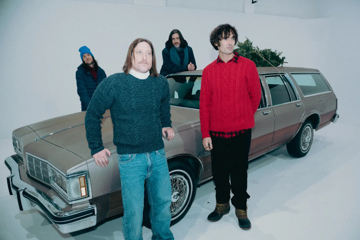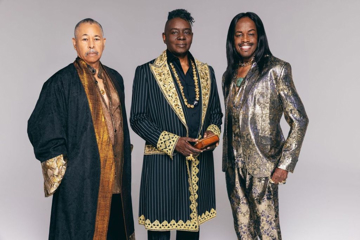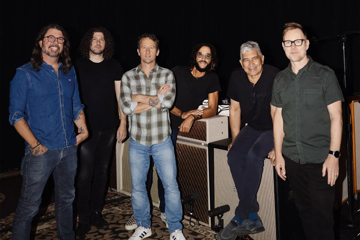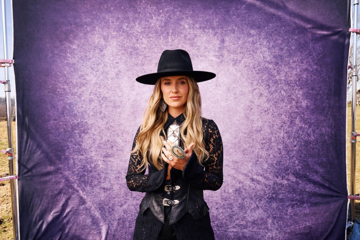Emerging Sounds
"I haven’t been home for 20 years now and this is the closest thing I could get to experiencing Persian music outside of Iran."
On a rainy weeknight in Melbourne, four men gather in Pooya Mehman Pazir's living room for an intensive rehearsal session. Pazir sits on a cushioned settee with a setar nestled in his arms. Across from him are Toofan Toghyani and Mehdi Mirzaei, surrounded by traditional Iranian musical instruments: the nay (vertical reed flute) and three different sizes of the daf (frame drum). Together, the trio form almost half of Mehr Ensemble – a group of classically trained Iranian musicians who perform original compositions to the structure and timing of Persian music in the Radif tradition. They are joined by Amin Payne, a producer of smooth, eclectic beats that encompass hip hop, funk, soul, reggae and disco.
First introduced by Jess Fairfax from Multicultural Arts Victoria two months ago through the ReMastered Myths program, Payne and Mehr Ensemble initially appear to have nothing in common except for their shared country of origin: Payne was born in Iran and moved to Auckland at the age of 12, his taste in Persian music eventually giving way to the likes of Prince, Funkadelic, Kool & The Gang and other hip hop producers. He moved to Australia in 2009.
Shiraz-born Pazir grew up in Tehran and founded the Mehr Ensemble there before relocating to Melbourne in 2006. Like him, nearly all the members of the ensemble previously studied under notable master musicians and singers of Persian classical music.
Now the two parties are about to perform for the first time together as part of the upcoming Emerge Festival, sparked – as Fairfax puts it – by “the idea of musicians from different musical and cultural backgrounds collaborating and challenging themselves with different rhythms, sounds and instrumentation.”
Don't miss a beat with our FREE daily newsletter
Payne marvels, “I haven't been home for 20 years now and this is the closest thing I could get to experiencing Persian music outside of Iran.”
Even in its development stage – which started a few weeks after Payne and Pazir's first meeting – the outcome is mesmerising to behold. A typical track starts with an instrumental introduction using either the setar or daf, followed by Payne's subtle beats gently gliding in. Each musician fluidly adds their layer to the composition, the pace and rhythm rising and falling simultaneously in perfect harmony. Lead singer Mirzaei chants several verses of Rumi's poetry midway through. Seated in a circle, they keep watchful eyes on each other for the minutest cue.
Toghyani describes the result of their collaboration as “a flow of deep, soulful, spiritual music – a mystical music that allows one to meditate yet it becomes rhythmic and trance-like, and quite energetic. That variance of feelings and emotions is what we expect in the most natural form.”
Reflecting on their creative process, Toghyani says, “We have to be quite specific in the way we involve Amin within each piece to ensure that it actually is effective and a complement to our music, instead of creating dissonance. A lot of that obviously involves the rhythms rather than melodies because he plays percussion rhythm on the drum machine. Apart from a number of rhythms and accents, which exist in classical Persian music but not in Western music, there are other rhythms that have a common ground – that we can break down to half time for example – and we find it interesting that they are played in different ways, and our Persian melodies can still be played on top of them.”
“We are inspired by poetry and scales of Persian music,” Pazir adds. “We rely on our feelings, we find a poetry to relate to it, then the right scale and mood of Persian music to combine with it. The same thing happens when we are working with Amin – when he joins us in the songs, we try to get him inspired by the music and [he in turn] finds the right rhythm and sound from his machines to accompany us.”
Payne is up for the task. “They use traditional instruments and perform strictly live, whilst [my sounds] are technology-based and pre-recorded. The most challenging part for me was not only memorising the structure of the songs, but also the very strict timing – a five millisecond or a beat behind and everything is gone! But the fact that I can understand the poetry in Farsi makes it easier for transitions.”
Apart from the excitement of creating a dynamic synergy together, their partnership has already left enriching benefits for both parties. “They reminded me how beautiful and complicated Persian music is,” Payne laughs. “All my life I only knew Persian pop music. It's been absolutely refreshing. I'm learning lots about the classical music and its structure, and I guess these guys are learning what drum machines can do!”
Pazir warmly agrees: “Before this we only used microphones to amplify our sound but now we actually had to do some work on our instruments – like, making a hole in my setar to plug a jack in. I can now produce some sounds from it that I previously wasn't able to do and, hopefully in the future, I could explore new areas in my music. It has been amazing for me – I deeply appreciate this big opportunity.”







